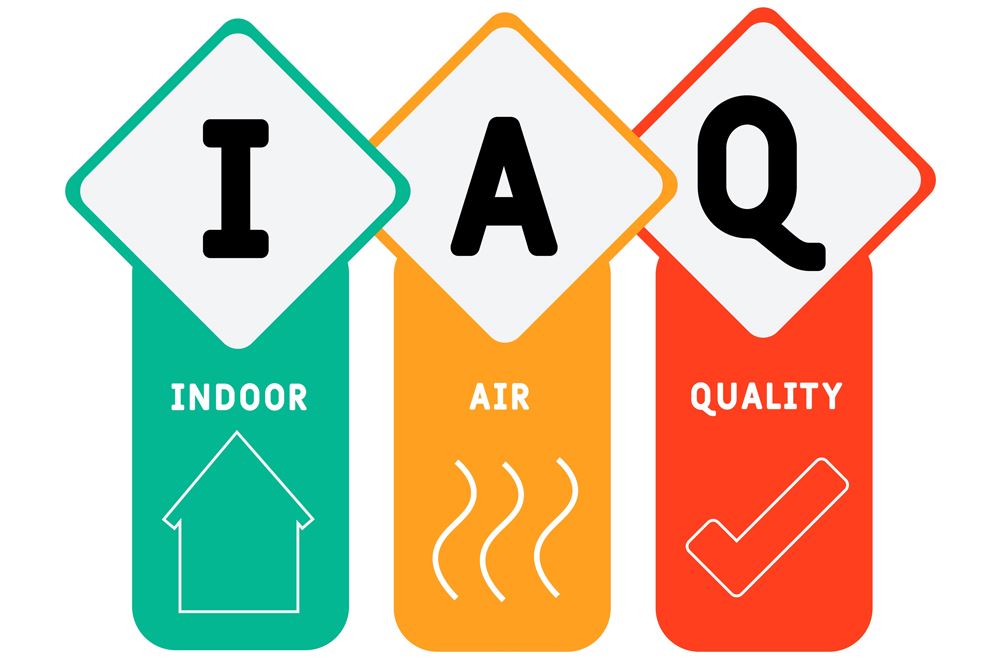Presidential Heating & Air Conditioning
Gaithersburg HVAC Contractors
Share
Share on FacebookTweet
Tweet this0Share
Share on LinkedIn0 shares on LinkedInLike most people, you spend a lot of your time indoors. But how often do you think about the quality of the air you’re breathing? Unfortunately, most people don’t realize the dangers that are lurking in their homes. But don’t fret; we have outlined some of the major contaminants and how to combat them in this article.
Maintaining indoor air quality is essential to the health and well-being of everyone in a building, whether home or office.

1. Biological Pollutants
Biological pollutants include mold, mildew, dust mites, viruses, and bacteria. They can lead to respiratory problems like allergies and asthma.
The Fix for Biological Pollutants
The best way to combat biological pollutants is to keep your home clean and clutter-free. Vacuum regularly with a HEPA filter and dust all surfaces. In addition, make sure your home has adequate ventilation to prevent mold and mildew from taking hold. Have your furnace or HVAC system regularly serviced by an HVAC company, like Presidential Heating & Air Conditioning in Gaithersburg, VA, to ensure it’s working correctly and filtering out contaminants. Ask your HVAC technician how often you should be changing/cleaning your filter and which is the best for your system.
2. Chemical Pollutants
Chemical pollutants include cleaning products, paint fumes, combustion gases (like those from cooking), and tobacco smoke. They can cause headaches, dizziness, nausea, and difficulty breathing. Some chemicals can even cause cancer.
The Fix for Chemical Pollutants
To reduce chemical pollutants in your home or business, choose non-toxic cleaning products and limit the use of paint or other strong-smelling chemicals. Ensure gas appliances are vented properly—this includes cooking appliances and any fireplaces you may have. If people smoke indoors, make sure they do so near an open window or door to allow the smoke to dissipate quickly. Also, consider an air purification system. Your HVAC specialist can recommend and install a system that will work with your heating and air conditioning systems.
3. Carbon Dioxide
A common indoor air quality issue is carbon dioxide build-up. Carbon dioxide is created through burning candles, wood, and gas. It is even created when we breathe. Elevated levels of carbon dioxide can cause headaches, dizziness, nausea, and difficulty breathing. In extreme cases, it can lead to death.
The Fix for Carbon Dioxide Issues
To prevent carbon dioxide build-up in your home or business, make sure there is adequate ventilation. This means opening windows and doors regularly or using exhaust fans when cooking or showering. Certain air purifiers can also help remove carbon dioxide from your home. Your HVAC specialist should be able to recommend an appropriate model.
4. Relative Humidity
Relative humidity refers to the amount of moisture in the air—too much moisture leads to mold and mildew growth, while too little moisture can cause respiratory problems. The ideal relative humidity level is between 30% and 50%.
The Fix for Relative Humidity
If your relative humidity is too high (>50%), use a dehumidifier to remove excess moisture from the air. If it’s too low (<30%), install a humidifier, like the APRILAIRE®, to add moisture back into the room. You can monitor the relative humidity level in your home or business with a hygrometer. However, most thermostats nowadays have one built in.
Indoor air quality is important for both our physical and mental health. Yet, it’s something we often take for granted. By keeping our homes clean, well-ventilated, and adequately humidified, we can keep our indoor spaces healthy. If you’re in the Gaithersburg, MD, area and looking for an HVAC company to help with air quality or furnace repair for your home or office, contact Presidential Heating & Air Conditioning.

